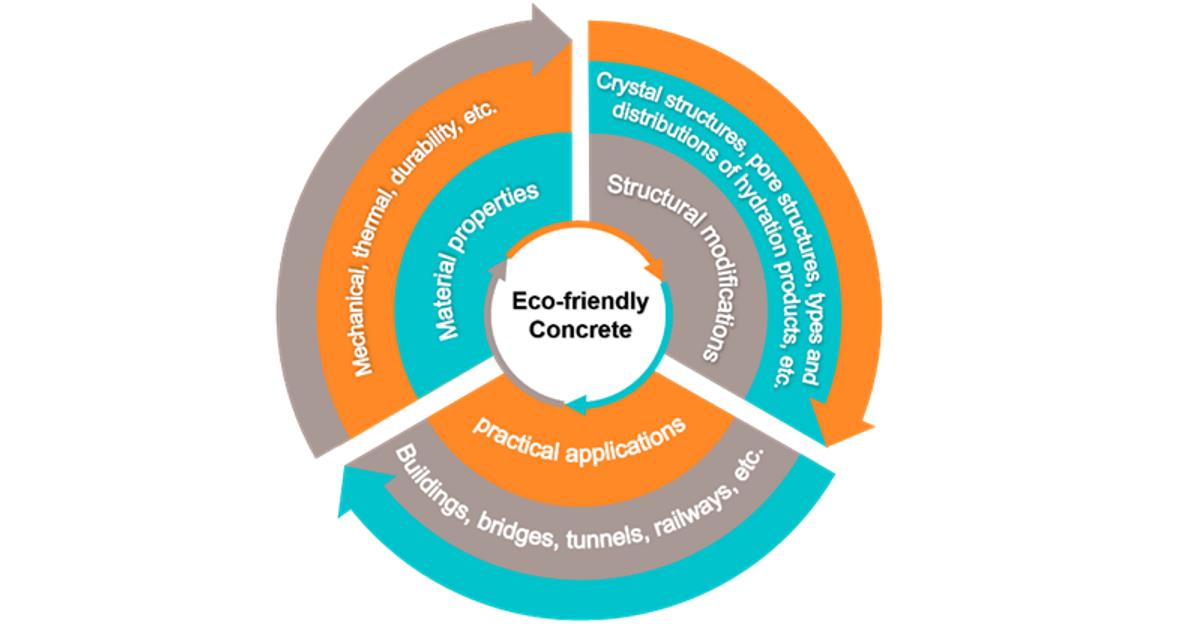Properties, Structures and Practical Applications of Eco-Friendly Cementitious Materials (Eco-CM)
A special issue of Materials (ISSN 1996-1944). This special issue belongs to the section "Construction and Building Materials".
Deadline for manuscript submissions: closed (20 October 2024) | Viewed by 8546

Special Issue Editors
Interests: interfaces in concrete materials and structures; multiscale simulation of concrete materials and structures; nano-engineered cementitious composites
Special Issues, Collections and Topics in MDPI journals
Interests: high-performance fiber-reinforced concrete (UHPFRC); sustainable and green concrete; durability of fiber-reinforced polymer (FRP) and seawater sea-sand concrete (SSC); static and seismic performance of high-speed railway bridges (HRBs)
Special Issues, Collections and Topics in MDPI journals
Interests: seawater sea-sand concrete (SSC); fiber-reinforced polymer (FRP)
Interests: sustainable construction and building materials; multifunctional/smart concrete; sensing technology and structural health monitoring; nano-engineered cementitious composites
Interests: Fiber-Reinforced Polymers (FRPs); Engineered Cementitious Composite (ECCs); strengthening and repair of concrete structures; durability of concrete structures; recycling of municipal solid waste
Special Issues, Collections and Topics in MDPI journals
Special Issue Information
Dear Colleagues,
In recent years, there has been a significant global interest in the concept of eco-friendly materials. The vast use of cementitious materials brings a heavy burden on the environment, especially, as they contribute to 8% of the global carbon dioxide emission through their production, transportation and use. This Special Issue, Properties, Structures and Practical Applications of Eco-Friendly Cementitious Materials (Eco-CM), delves into an in-depth exploration of the material properties, structural modifications and practical applications of eco-friendly cementitious materials, involving ultra-high performance concrete (UHPC), engineered cementitious composite (ECC), fiber-reinforced concrete (FRC), self-compacting concrete, self-healing concrete, nano-engineered concrete, alkali-activated concrete, etc. Eco-CM invites submissions on studies related to the comprehensively analysis of the various characteristics exhibited by these materials (e.g., their mechanical, thermal and durability properties). We encourage investigations aimed at revealing the potential of modifying the structural composition of cementitious materials for enhancing their performance and adaptability. Moreover, we welcome studies delving into the practical applications of these materials in diverse fields, such as construction, infrastructure and sustainable development. By shedding light on the intricate interplay between material properties, their structural modifications and their practical applications, Eco-CM aims to offer valuable insights to researchers, engineers and practitioners that seek to optimize and innovate cementitious materials.
Dr. Xinyue Wang
Dr. Peng Wang
Dr. Linyuwen Ke
Dr. Liqing Zhang
Prof. Dr. Weiwen Li
Guest Editors
Manuscript Submission Information
Manuscripts should be submitted online at www.mdpi.com by registering and logging in to this website. Once you are registered, click here to go to the submission form. Manuscripts can be submitted until the deadline. All submissions that pass pre-check are peer-reviewed. Accepted papers will be published continuously in the journal (as soon as accepted) and will be listed together on the special issue website. Research articles, review articles as well as short communications are invited. For planned papers, a title and short abstract (about 250 words) can be sent to the Editorial Office for assessment.
Submitted manuscripts should not have been published previously, nor be under consideration for publication elsewhere (except conference proceedings papers). All manuscripts are thoroughly refereed through a single-blind peer-review process. A guide for authors and other relevant information for submission of manuscripts is available on the Instructions for Authors page. Materials is an international peer-reviewed open access semimonthly journal published by MDPI.
Please visit the Instructions for Authors page before submitting a manuscript. The Article Processing Charge (APC) for publication in this open access journal is 2600 CHF (Swiss Francs). Submitted papers should be well formatted and use good English. Authors may use MDPI's English editing service prior to publication or during author revisions.
Keywords
- cementitious materials
- material property
- structural modification
- practical application
- smart and sustainable
- long-term durability
Benefits of Publishing in a Special Issue
- Ease of navigation: Grouping papers by topic helps scholars navigate broad scope journals more efficiently.
- Greater discoverability: Special Issues support the reach and impact of scientific research. Articles in Special Issues are more discoverable and cited more frequently.
- Expansion of research network: Special Issues facilitate connections among authors, fostering scientific collaborations.
- External promotion: Articles in Special Issues are often promoted through the journal's social media, increasing their visibility.
- Reprint: MDPI Books provides the opportunity to republish successful Special Issues in book format, both online and in print.
Further information on MDPI's Special Issue policies can be found here.










